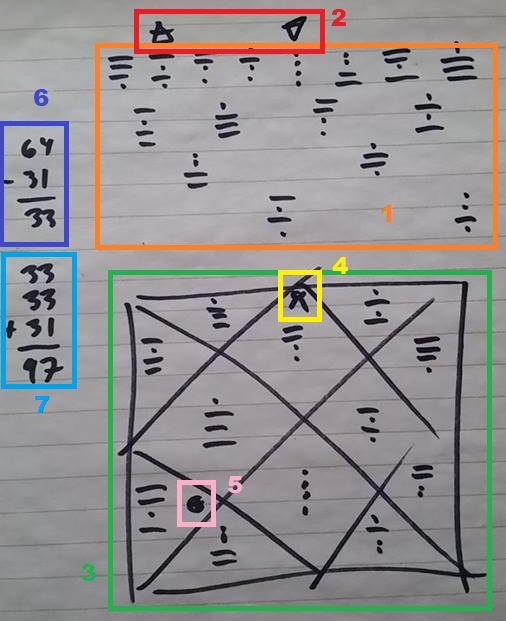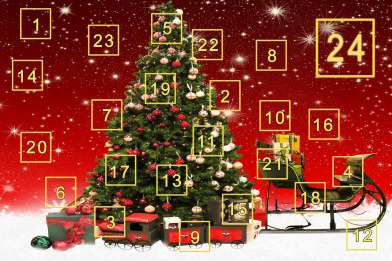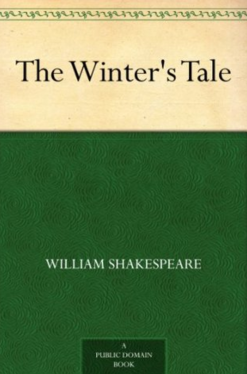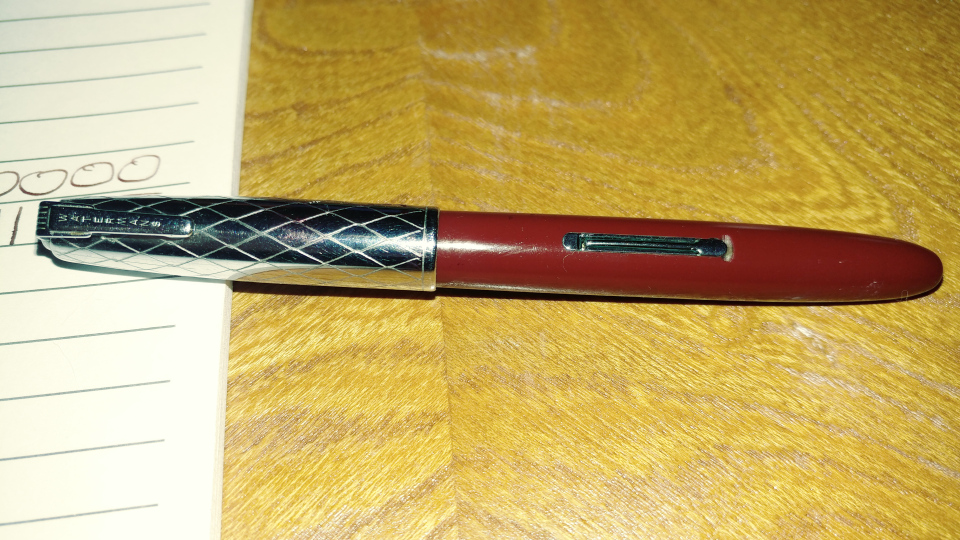Whether it’s Tarot, geomancy, runes, or any other kind of art, I consider divination in general to be a process of three basic steps:
In geomancy, that second step is the whole process of developing the four Mothers and the rest of the chart from them. After the querent and I refine the query sufficiently and settle on the final form of the question to be asked, and once I manipulate my tools (cards, dice, or whatever) to come up with the four Mother figures, I then proceed to draw out the entire geomantic chart with all the relevant information I’d need to start with. Once that’s done, this is what my scribbling and scratching typically ends up like:

The exact process I follow to arrive at this mess of lines and symbols from which I divine the fates and facts of the world is this:
You can see the different steps I took broken down by the above list fairly clearly as I did them (orange, red, green, yellow, pink, blue, cyan):

Making the Shield and House Charts is nothing special for us at this point, and I’ve discussed the Via Puncti before on my blog. The Sum of the Chart is also fairly common knowledge, whereby you sum up all the points of the sixteen figures in the Shield Chart and compare it to 96 to determine how fast or slow the situation will resolve; again, it’s something I’ve discussed before. Still, it might surprise you that I don’t actually calculate it directly, but base it on my calculations of the Part of Spirit (due to the mathematics of geomancy, the method works out to the same result). Likewise, I don’t calculate the Part of Fortune directly, but also base it on the Part of Spirit. So what gives? What are these Parts, how are they calculated, and how are they used in geomancy?
First, let’s go with the more well-known of the two Parts, the Part of Fortune. How do we find this indication? From Christopher Cattan’s book The Geomancie (book III, chapter 21):
The question being made, after that we have judged by the houses, figures, angles, companions, aspects, the way of point, and by all the other sorts and manners before said, now resteth it to judge by the Part of Fortune. The Part of Fortune figures, which afterwards ye must divide into twelve parts, and that which remaineth give unto the figures. As if there rest two ye must give into unto the second figure, if there do remain four to the fourth figure, if there be six to the sixth figure, if there be eight to the eighth figure, if there be ten to the tenth figure, if there be twelve to the twelfth figure. As by example, if the figure be of 72 points, or 84 or 96 or 108 points, then the part of fortune shall go into the twelfth. But if the said points of the figure made, being divided by twelve, there do remain but two, as if there remain seventy and four where there remaineth but two, then (as before we have said) ye must give that unto the second house, and there shall be the Part of Fortune. The which if the figure and house be good (for both the one and the other must be looked upon) you shall judge good, and if it be evil ye shall also judge evil; and so likewise shall ye do of all the other figures. But if the figure be good, and the house ill, or contrary, the house good and the figure ill, you shall judge the said Part of Fortune to be mean. And, to end ye may the more easier know the place where the figure falleth, which is called the Part of Fortune, ye shall mark it with this mark,





